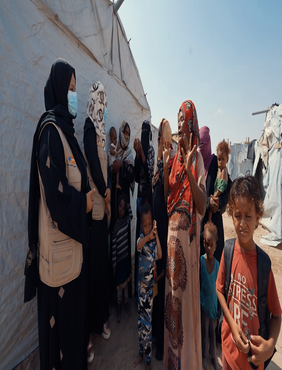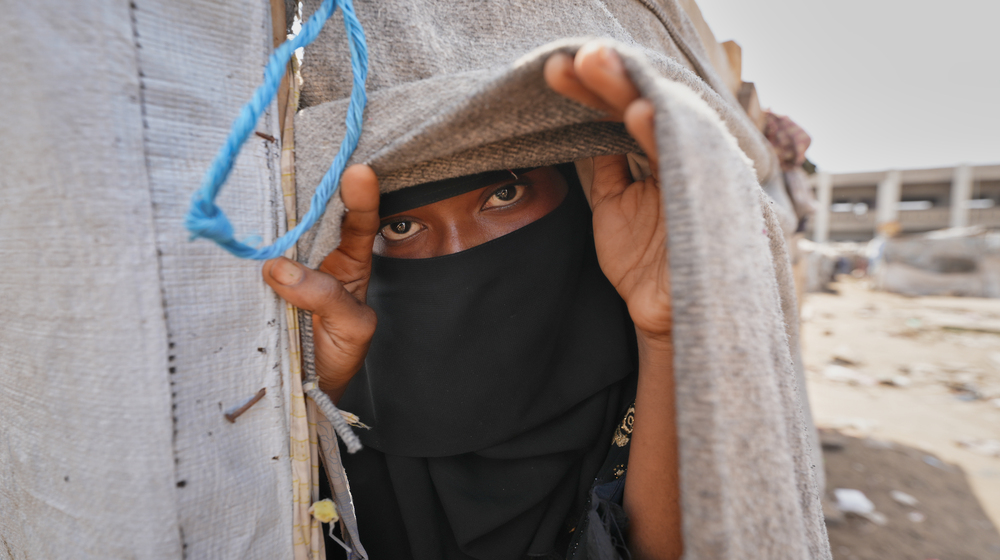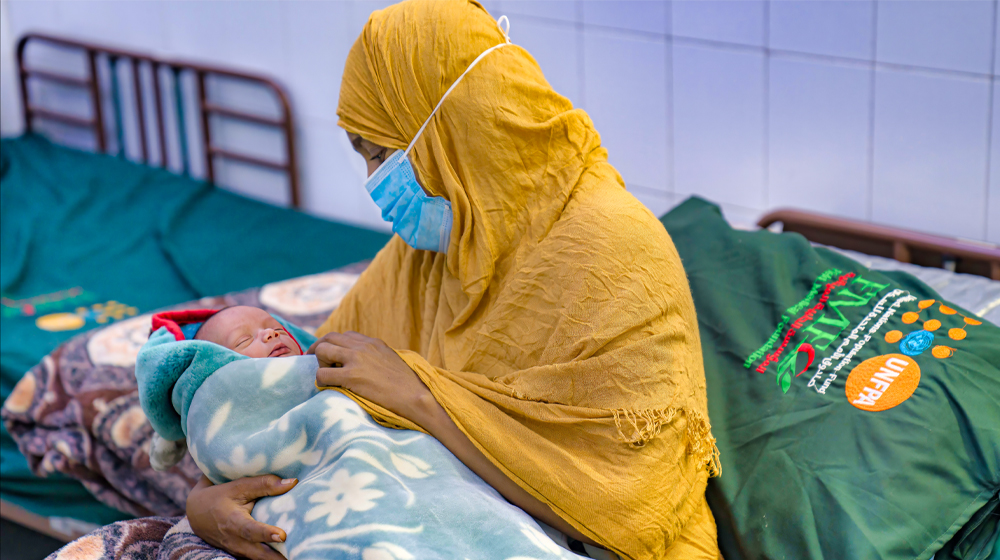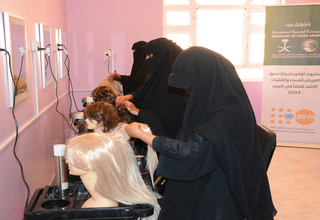Yemen remains one of the world’s largest humanitarian crises, with an estimated 21.6 million people requiring humanitarian assistance or protection in 2023. The humanitarian crisis is primarily driven by a continued conflict and the impact of climate change leading to severe economic challenges, which has been exacerbated by critical funding gaps and access challenges.
In 2023, the protracted crisis was compounded by climate change induced natural disasters, forcing 319,445 people to flee their homes, many who have been displaced multiple times. In November 2023, Cyclone Tej that struck southern costal areas of Yemen, affected an estimated 100,000 households, including 3,000 pregnant women.
The UNFPA-led Rapid Response Mechanism (RRM) stepped up its response, expanding its operational presence across 19 severely-affected governorates to ensure the timely and efficient delivery of lifesaving assistance to over 300,000 people. Seventy-five percent of the assisted through the RRM were displaced due to climate related natural disasters, while 25 percent were individuals displaced due to the conflict.
Shortages in funding continued to force aid organizations to reduce or close critical assistance programmes during the year. The 2023 Humanitarian Response Plan, seeking US$4.34 billion to assist 17.3 million people, was only 39 per cent funded by December 2023.
UNFPA's appeal of US$70 million to sustain programmes for women and girls in 2023 was only funded at 57 per cent by the end of the year.
In 2023, UNFPA's response reached more than 2 million individuals with life-saving reproductive healthcare, protection information and services and emergency relief, with support to 95 health facilities, 35 safe spaces, eight shelters and eightspecialized mental health centres.




